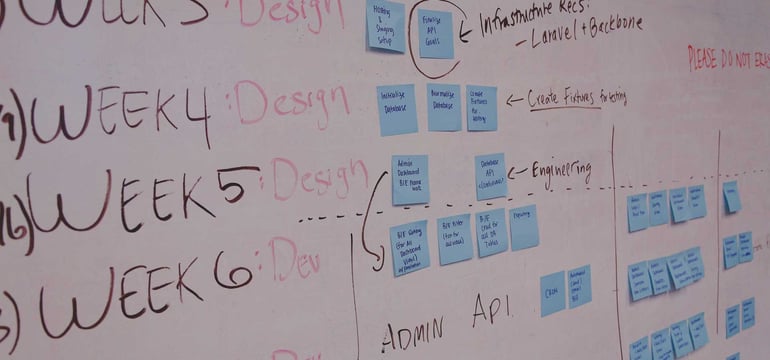So you have a company that has an online store, an RSS feed for your blog posts, a Facebook page, and a DropBox account. Using each and every interface and switching between them can be exhausting. There has got to be an easier way to do this, right? Right! Imagine having all of these items at your fingertips, and the best of all: they all communicate to one-another without your input into each one individually. How is that possible, you may ask? By utilizing APIs.
Wait! What is an API, Anyways?
An API, or Application Program Interface, is a specific set of routines, protocols, or tools for building software applications. They provide all of the tools necessary for software components to interact properly with one another. Consider them a “digital middleman.”
Technically, APIs are a type of user interface, or UI, but instead of being geared to be used by humans, they are designed for computers to read and understand. More or less, it means that they don’t need to be visually stunning to get the job done, as computers aren’t picky and don’t need an attractive interface to work properly. As long as it has the necessary codes to run, the computer is content getting its job done.
David Berlind at programmableweb.com has used a fantastic example of what an API does, referring to it as a common electrical outlet in the home:
Imagine what life might be like without a standard. With no plug, matching socket or standard particulars, we might have to hard-wire appliances into the walls of buildings. This would involve gathering the required tools, unsheathing all the wires and splicing the wires together. Of course, we would also need to know something about the wires coming out of the wall. Moving an appliance from one location to another would be a major undertaking in disconnection and reconnection.”
It’s no wonder that APIs are now becoming a standard, much alike the electrical outlets that David mentioned. Can you imagine having to hardwire a refrigerator into your kitchen?

What an API Can Do For You
APIs exist solely to make it easier for one platform to communicate to another. Despite that simplicity, they have hundreds of uses. Joe McKendrick of Forbes notes that creating an API strategy adds functionality, increases agility, and decreases operating costs.
Countless companies use APIs for different reasons – for example, Twitter has one for streaming video from YouTube and Yelp uses one for showing directions off of Google Maps. Do you have a Facebook account? Yes? Remember how your Aunt Sally has a tendency to invite you to play Bubble Pop Extreme or Little Farm Town? You guessed it: those games are a type of API (albeit, annoying ones).
Envision you have an e-commerce store. Having an Inventory tracking API makes it easy for your customers to know if the item they want is in stock in real-time. If inventory is low, it will also urge them to make a purchasing decision quicker by listing the limited quantities on the page. It also saves a considerable amount of time, as otherwise you'd have to manually update your database with the items in stock.
Needless to say, APIs are very versatile and have a plethora of different uses. There’s certainly a flavor that will work for you and your needs. 
Options for API Integration
There are companies that provide seamless integration services as part of their portfolio. For example, MuleSoft has the Anypoint Platform for APIs, a SaaS (Software as a Service) which does all the heavy lifting for you. Here are just a few of its benefits:
- It gives you the ability and flexibility to develop new APIs
- You can design new interfaces for your existing APIs
- It helps you efficiently manage all your APIs in one location
- It uses a single platform to securely and rapidly expose Enterprise data to web apps and other devices
- It eliminates the dreaded pain of a new integration system
More on APIs from MuleSoft
V-Soft Consulting is a proud partner of MuleSoft, bringing a compelling solution to the equation with our services. Experience, value, and more than just a transaction but a long term partnership that leverages the best industry components at your disposal. Learn more about what we do and how we can help you bring your business into the future here.
















